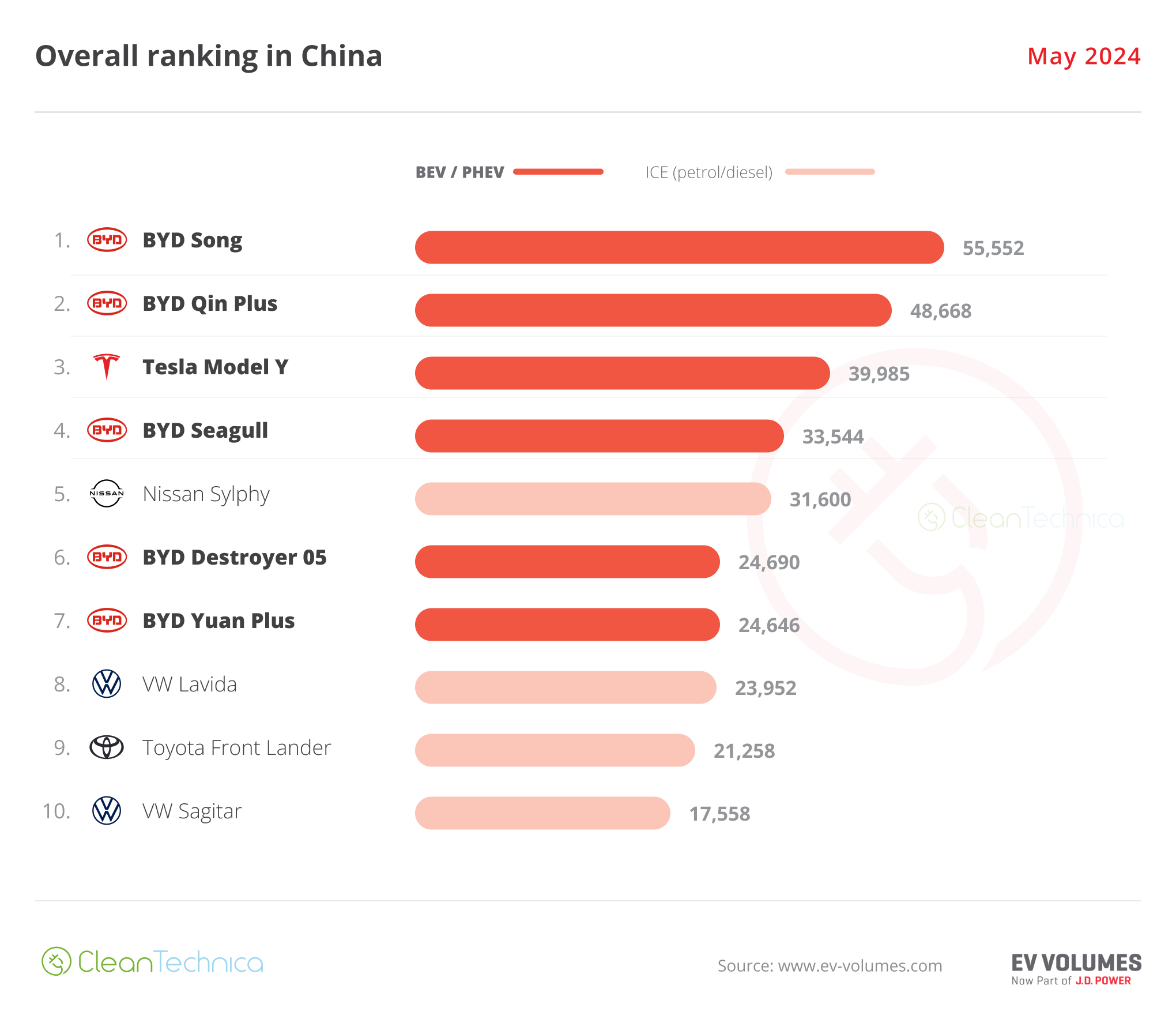Sign up for daily news updates from CleanTechnica on email. Or follow us on Google News!
There are two stories in the news today that concern delivery vehicles and their emissions. One is from Transport & Environment, which says emissions from the delivery fleet in the UK are increasing as companies double down on diesel-powered vans. The other is from UPS, which says it is adding 100 battery electric vans to its delivery fleet in Paris. Why the contradiction? That’s a question that needs answering, and the sooner the better.
What’s the big deal about delivery vans? Simply this: They are in nearly constant operation for as much as 12 hours a day. While there are many times more private vehicles than delivery vans, they sit parked 95 percent of the time, so while there are many more of them, their emissions are less on a per vehicle basis than they are for delivery vans.
More Diesel Delivery Vans
In a report dated June 22, 2024, Transport & Environment said the number of vans on the road in the UK has skyrocketed in recent years, with more than a million added between 2014 and 2023. Most of these vans have been diesel powered, which has led to worse carbon dioxide emissions and other pollutants. Since 1990, greenhouse gas emissions from delivery vans have gone up by 62 percent while nitrogen oxide emissions have effectively flatlined in recent years.
Compared with other vehicle types, the carbon emissions from delivery vans are going in the wrong direction, T&E says. Its Climate Change Committee has specifically noted that progress is not going quickly enough on reducing emissions from delivery vans, with slower electric van uptake and rising average CO2 emissions from new vans being highlighted as a concern. The vast majority of van sales have been powered by diesel, in opposition to the trend in the private car market, where sales of diesel of diesel-powered cars is in notable decline.
Ideally, T&E says, progress toward emissions reductions in fleets owned by companies could drive a transformation across the sector. Corporate fleets own 58% of all the vans in the UK, and yet they drive 76% of the van mileage, which means they have a responsibility to make those miles as green as possible.
Ralph Palmer of Transport & Environment told The Guardian this week the rise in van emissions was alarming. “Despite the push for more electric vans on our roads, we are still witnessing a surge in greenhouse gas emissions from vans as a result of sustained sales of diesel vans, countering trends we are seeing in the car market,” he said. “There’s not enough progress being made to support businesses and sole traders to make the switch.”
The good news is that electric van sales increased seven-fold over the past five years. That growth is significant and is expected to continue and go even faster as new policies that require van makers to sell more zero-emission vans start to take effect. In fact, the ZEV mandate should push the UK ahead of other European countries that have overtaken us in electric van uptake over the last few years.
T&E says there are several measures that could help the transition to zero emission vans across the UK, including:
- Clean air measures such as congestion charges and ultra low emission zones would encourage a shift away from dirty diesel vans in busy, urban areas.
- Scrappage schemes for old diesel vans as well as extending grants for plug-in vans for small businesses would help with that initial cost barrier.
- A clear plan for charging infrastructure to support both vans and fuel cells vehicles as part of an electrified road freight system.
- Creation of zero emission logistics zones to speed up the shift to electric delivery vans and cargo bikes in urban areas.
Michael Salter-Church, sustainability director at Openreach, a subsidiary of British Telecom, told The Guardian his company had been “frustrated” by the range of vehicles on the market and the ZEV mandate was a really important step. “Our engineers really like them — the [lack of] noise, the ability to warm them up very quickly during winter weather,” he said. Openreach aims to convert all of its 30,000 vans by 2031, and so far it has 4,100 battery electric vans, helped by government grants of up to £5,000 a van for a maximum of 1,500 vans a year per company. “It is right to put more pressure on the manufacturers,” he said. “We were very concerned that no political party has pledged to extend the electric van grants beyond 31 March, 2025.”
Openreach has installed chargers at 2,000 of its engineers’ homes — most of its employees park them at home overnight — but Salter-Church said they sometimes faced problems charging while on the road. “Quite often charging points are designed for cars, so we’ve found limited parking spaces, short cables and sometimes we found they are installed in car parks where the barrier height means vans can’t get in. Charging infrastructure needs to be improved.”
 Chip in a few dollars a month to help support independent cleantech coverage that helps to accelerate the cleantech revolution!
Chip in a few dollars a month to help support independent cleantech coverage that helps to accelerate the cleantech revolution!
UPS Bringing 100 Electric Delivery Vans To Paris
In a press release on June 20, 2024, UPS announced it plans to add 100 battery electric delivery vans from Iveco eDaily to its fleet in Paris. The electric vans are part of a bigger plan. UPS expects to have 600 electric delivery vehicles in Europe by the end of the year. The press statement said the electric delivery vans are being “custom made for UPS” and will have a range of up to 142 miles (228 kilometres). “Our customers look to us for efficient, reliable and sustainable supply chain solutions,” says Artur Drenk, UPS sustainability director in Europe, Middle East, Africa and India. “Innovative technology like our EVs ensures that we meet our customers’ needs while reducing our environmental impact.”
UPS said the new electric delivery vans would be:
-
Good for our customers: These EVs produce zero tailpipe emissions and are allowed to operate in zero-emission zones. That means we can better serve our customers in congested cities … now that’s electric. 😉
-
Good for the planet: Our innovations in sustainability mean we can directly contribute to Paris’s transition to low-carbon mobility and efforts to reduce the city’s carbon footprint by 80 percent by 2050.
The Takeaway
These two stories make it clear that while commercial fleets may want to electrify their delivery vehicles, barriers remain. Range is not usually such an important consideration, as the routes these vans travel are well known and predictable. High initial costs and charging remain challenges, however. While progress has been made on charging infrastructure, much of it does not address the particular needs of bulky vehicles that need more room than ordinary cars and may have charging ports that require longer charging cables.
The lesson here is that the EV revolution for delivery vehicles is progressing, but not as fast as needed to make the conversion to electric delivery vans happen as soon as climate activists might wish. There’s still a long way to go and a short time to get there. One potential bright spot is that the supply of less expensive LFP battery cells is increasing in Europe. Hopefully that will lead to some low-priced delivery vans becoming available soon.
Have a tip for CleanTechnica? Want to advertise? Want to suggest a guest for our CleanTech Talk podcast? Contact us here.
Latest CleanTechnica.TV Videos
CleanTechnica uses affiliate links. See our policy here.




